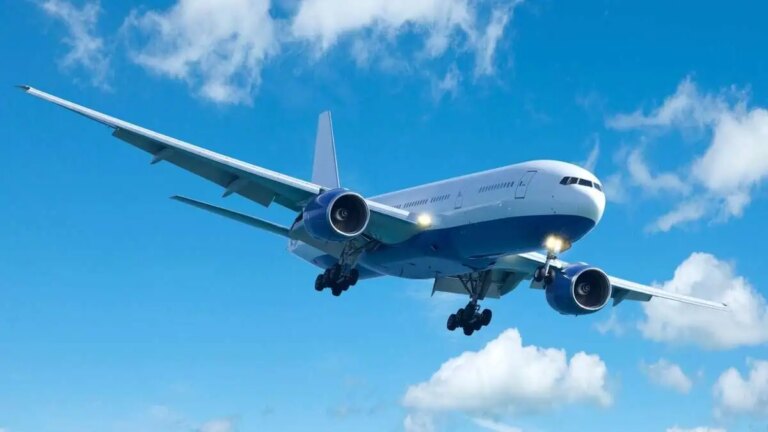Hyderabad: Air travel between Hyderabad and Australia has witnessed a significant surge over the past eight years, with passenger numbers nearly doubling on both Melbourne and Sydney routes.
According to senior manager (Route Network Planning) at Camaair, Behramjee Ghadially, the Hyderabad–Australia market is now the third largest among Indian metros.
In data shared by Ghadially on LinkedIn, which includes a route-wise comparison of Indian cities’ air travel demand to Melbourne (MEL) and Sydney (SYD) during the period 2016, 2019, and 2024.
The numbers represent round-trip passengers between these city pairs, showing how Indian outbound traffic to Australia has nearly doubled within eight years.
According to the chart, Delhi–Melbourne leads the market with a jump from 1,58,721 passengers in 2016 to 3,63,192 in 2024, recording a 129 percent growth, while Delhi–Sydney grew from 1,41,825 to 2,18,299 passengers (54 percent).
Similarly, Mumbai–Melbourne climbed from 55,942 to 84,512 (51percent), and Bengaluru–Sydney surged from 36,876 to 95,726, a massive 160 percent rise.
The Hyderabad routes showed one of the strongest jumps, with HYD–Melbourne rising from 35,984 in 2016 to 85,581 in 2024 (138 percent), and HYD–Sydney increasing from 36,591 to 71,083 (94 percent).
The overall India–Australia market (covering all listed city pairs) grew from 7,29,528 passengers in 2016 to 14,16,848 in 2024, showing a total increase of 94 percent.
Reacting to this data, an aviation enthusiast page from Hyderabad, @SkyHYD on X (formerly Twitter), citing the LinkedIn post, described the development as a “Hyderabad–Australia demand boom,” noting that the city now ranks among India’s top three markets for Australia-bound passengers.
Hyderabad (HYD)- Australia demand boom!
HYD–Australia 3rd largest India metro market and traffic has surged massively (2016→2024):
HYD–MEL: 35,984 → 85,581 (+138%)
HYD–SYD: 36,591 → 71,083 (+94%)Growing student migration, Business & strong VFR traffic… pic.twitter.com/gvvxh2UFfc
— HYD Air (@SkyHYD) October 26, 2025
The user further wrote that the growing numbers are largely driven by student migration, business travel, and Visiting Friends and Relatives (VFR) traffic.
The user also claimed that the Australian low-cost carrier, Jet Star, will soon operate services between Hyderabad and Melbourne, which would be especially possible if supported by a codeshare partnership with IndiGo (6E), and that a 6E–Qantas codeshare could help sustain daily operations, the post added.
In his LinkedIn post, Ghadially attributed the surge in demand to the rapid emigration of Indians to Australia and a sharp increase in Indian students choosing Australian universities over those in the UK, USA, or Canada. He explained that Australia’s affordable living costs, favourable climate, cricket culture, and better post-graduate job prospects leading to permanent residency have made it a top destination. While Delhi and Punjab continue to dominate the total India–Australia travel numbers, Ghadially highlighted that South Indian cities like Hyderabad, Bengaluru, and Kochi have also shown impressive and consistent growth.
He pointed out that the Delhi–Melbourne segment alone now carries 3.63 lakh passengers annually, a volume larger than any single USA–India route. For comparison, even Ho Chi Minh City–Melbourne/Sydney (SGN–MEL/SYD) traffic is smaller than Delhi’s numbers. He added that Bengaluru–Sydney’s rise was fueled by Qantas’ direct flights using Airbus A330-200 aircraft and its IndiGo codeshare, which ensures domestic connectivity within both India and Australia.
Ghadially also outlined future opportunities for airlines. He suggested that Jetstar’s Boeing 787-8 aircraft could be ideal for launching tri-weekly Melbourne–Hyderabad and Sydney–Mumbai services, while Qantas’ upcoming Boeing 787-10 could operate Sydney–Delhi from 2027 after retiring its A330 fleet. Meanwhile, Air India could use larger Boeing 787-9 or Airbus A350-900 aircraft for daily flights to both Melbourne and Sydney, supported by its Delhi hub.
Also Read
Low-cost Indian airline to operate daily Hyderabad–Madinah flights
For IndiGo, he proposed an expanded network under its codeshare with Qantas, including daily Delhi–Melbourne, daily Mumbai–Sydney, six weekly Mumbai–Melbourne, and three weekly Bengaluru–Melbourne flights using Airbus A350 aircraft, ensuring smooth passenger feed from Kathmandu, Dhaka, Colombo, the Gulf, and Europe in both directions.
Ghadially further observed that this surge in air travel mirrors the growing Indian presence in Australia, visible during recent cricket tournaments. He noted how stadiums in Melbourne and Sydney were filled predominantly with Indian supporters during matches like the India–Australia bilateral ODI series and the India–Pakistan T20 World Cup game at the Melbourne Cricket Ground (MCG).
Images are for reference only.Images and contents gathered automatic from google or 3rd party sources.All rights on the images and contents are with their legal original owners.



